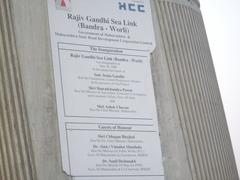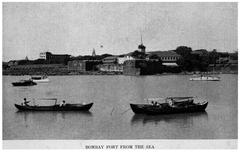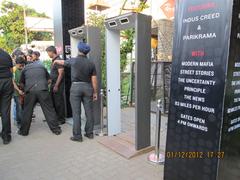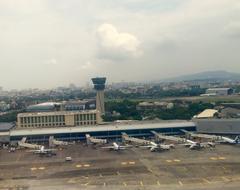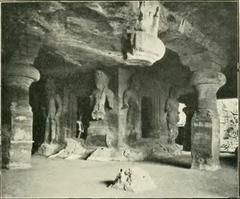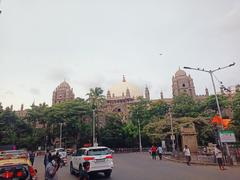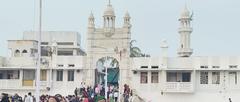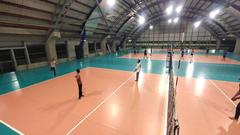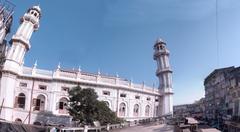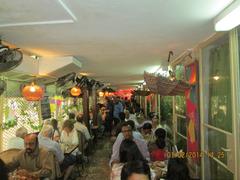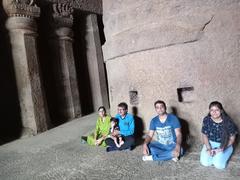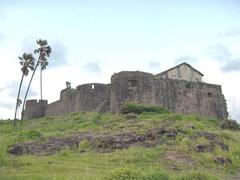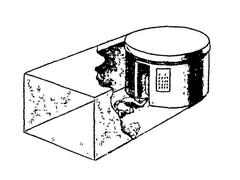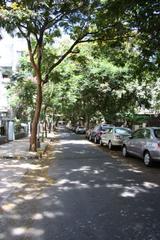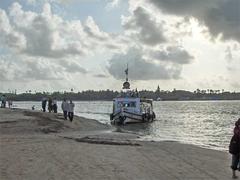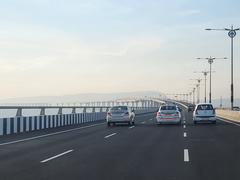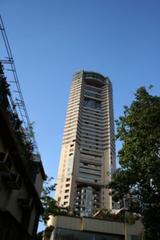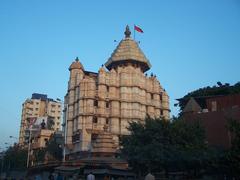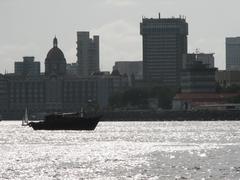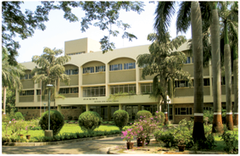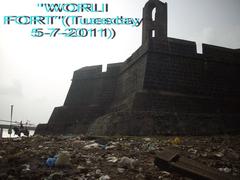
Cathedral of the Holy Name Mumbai: Visiting Hours, Tickets, and Historical Significance
Date: 04/07/2025
Introduction
The Cathedral of the Holy Name in Mumbai is a magnificent emblem of the city’s colonial heritage, Catholic faith, and architectural grandeur. Located in the historic Colaba district, this Gothic Revival masterpiece serves as the mother church of the Archdiocese of Bombay and a vibrant center for religious, cultural, and community life. Its soaring arches, intricate stained glass, and historic pipe organ draw thousands of visitors each year, whether for worship, historical exploration, or admiration of its artistry.
This comprehensive guide details the cathedral’s visiting hours, entry information, accessibility, historical significance, and tips for making the most of your visit. For official updates, refer to the Archdiocese of Bombay and Mumbai Tourism resources.
Table of Contents
- Historical Background
- Visiting the Cathedral
- Major Events and Milestones
- Frequently Asked Questions
- Visuals and Media
- Conclusion
- References
Historical Background
Colonial Roots and Jesuit Influence
The cathedral’s origins are closely linked to the Jesuit missionaries who arrived in Bombay in the 19th century, during a time of expanding European influence in India. The British colonial administration facilitated the establishment of Christian institutions, and the Jesuits responded by building churches and schools to serve both expatriates and Indian converts (Archdiocese of Bombay).
In 1886, Pope Leo XIII elevated the Bombay Vicariate to an archdiocese (Catholic Hierarchy), prompting the need for a central cathedral to anchor the growing Catholic community.
Construction and Architecture
The foundation stone was laid in 1902, with the cathedral completed and consecrated in 1905. The structure, funded by local and European donors, exemplifies the Gothic Revival style: pointed arches, ribbed vaults, flying buttresses, and elaborate stained glass windows imported from Europe (Mumbai Tourism). The site also includes the Archbishop’s House and Holy Name High School, reinforcing its role as both a spiritual and educational hub.
Religious and Community Role
As the seat of the Archbishop of Bombay, the cathedral is the heart of the archdiocese, hosting major liturgical celebrations, ordinations, and community gatherings (Archdiocese of Bombay). It has a long-standing tradition of providing education, healthcare, and charitable services to the wider community.
Cultural and Artistic Features
Notable features include stained glass windows depicting biblical scenes, an Italian marble main altar, and a rare functioning pipe organ (Mumbai Mirror). Sacred artifacts such as a gold-embroidered stole gifted by Pope John XXIII and a bell presented by Pope Paul VI during the 38th International Eucharistic Congress in 1964 add to its historical significance (Indianetzone). The cathedral also hosts concerts, art exhibitions, and interfaith events.
Conservation Efforts
Mumbai’s humid climate poses challenges to the cathedral’s preservation. The building has undergone several restoration projects, including a major facelift in 2019 (The Hindu), balancing heritage conservation with the needs of an active congregation.
Visiting the Cathedral
Hours and Entry
- Cathedral Hours: 7:00 AM – 7:00 PM daily (mumbaimetroroute.com)
- Church Office: Monday–Saturday, 9:00 AM – 1:00 PM; closed Sundays (cathedraloftheholyname.in)
- Entry: Free for all visitors; donations are appreciated.
Accessibility and Facilities
- Wheelchair Access: There are steps at the entrance; ramps may not be present, so assistance is recommended.
- Restrooms: Not available within the premises; use nearby cafes or hotels.
- Seating: Ample pews for reflection or prayer.
Getting There
- Address: 19, Nathalal Parikh Marg, Colaba, Mumbai, Maharashtra 400001, India (cathedraloftheholyname.in)
- By Train: Churchgate station is about 2 km away—a short taxi ride or 20–25 minute walk (mumbaimetroroute.com).
- By Road: Taxis, auto-rickshaws, and ride-hailing apps (Uber, Ola) operate in the area.
- Parking: Limited on-street parking; public transport is recommended.
Etiquette and Tips
- Dress Code: Modest attire is expected.
- Quiet Respect: Silence is appreciated; switch off mobile phones.
- Photography: Permitted outside Mass times; avoid flash and seek permission for tripods.
- Best Time to Visit: Early morning or late afternoon for a peaceful experience; avoid peak festival times for smaller crowds.
Guided and Virtual Tours
- Self-Guided Visits: Most visitors explore independently, admiring the architecture and sacred art (mumbaimetroroute.com).
- Guided Tours: Not routinely offered by the cathedral, but heritage walks may include it.
- Virtual Tour: Available on the official website.
Nearby Attractions
- Gateway of India: ~1 km away.
- Colaba Causeway: Famous for shopping and street food.
- Prince of Wales Museum (Chhatrapati Shivaji Maharaj Vastu Sangrahalaya): Premier collection of Indian art and history.
Major Events and Milestones
- 1886: Bombay becomes an archdiocese.
- 1902: Foundation stone laid.
- 1905: Cathedral consecrated.
- 1964: Hosted Pope Paul VI during the 38th International Eucharistic Congress; received the cathedral bell.
- 2019: Significant restoration project undertaken (The Hindu).
Annual highlights include Christmas and Easter Masses and other significant liturgical celebrations (TourMyIndia).
Frequently Asked Questions
Q: What are the visiting hours?
A: 7:00 AM to 7:00 PM daily.
Q: Is there an entry fee?
A: No, entry is free.
Q: Are guided tours available?
A: Not regularly, but local tour operators and heritage walks may include the cathedral.
Q: Is the cathedral wheelchair accessible?
A: Entrance steps are present; assistance is recommended for those with mobility challenges.
Q: What languages are Masses offered in?
A: English and Konkani.
Q: Can non-Christians visit?
A: Yes, all visitors are welcome with respectful behavior (mumbaimetroroute.com).
Visuals and Media


View location on Google Maps | Virtual Tour of Cathedral of the Holy Name
Practical Tips for Visitors
- Arrive early for a tranquil visit and to appreciate the architecture.
- Combine your visit with other Colaba attractions for a full cultural experience.
- Respect local customs and religious services.
- English, Hindi, and Marathi are widely spoken at the cathedral.
- For emergencies: Dial 100 for Mumbai Police; nearest hospital is Bombay Hospital, ~3 km away.
Conclusion
The Cathedral of the Holy Name stands as a living monument to Mumbai’s colonial past, vibrant Catholic heritage, and enduring spirit of pluralism. Whether you are seeking a spiritual retreat, a lesson in history, or an encounter with architectural beauty, the cathedral offers a rewarding experience. Its central location, free entry, and proximity to major Mumbai historical sites make it accessible to all.
For updated information, mass schedules, and restoration news, visit the cathedral’s official website. Enhance your visit with the Audiala app for audio tours and follow social channels for the latest updates.
References and Further Reading
- Mumbai Tourism: Cathedral of the Holy Name
- Archdiocese of Bombay
- Catholic Hierarchy
- The Hindu: Holy Name Cathedral to get a facelift
- Indianetzone: Cathedral of the Holy Name
- TourMyIndia: Cathedral of the Holy Name Mumbai
- Mumbai Metro Route: Cathedral of the Holy Name
- Cathedral of the Holy Name official website
- Mumbai Mirror: The Holy Name Cathedral
- TripHobo: Cathedral of the Holy Name

